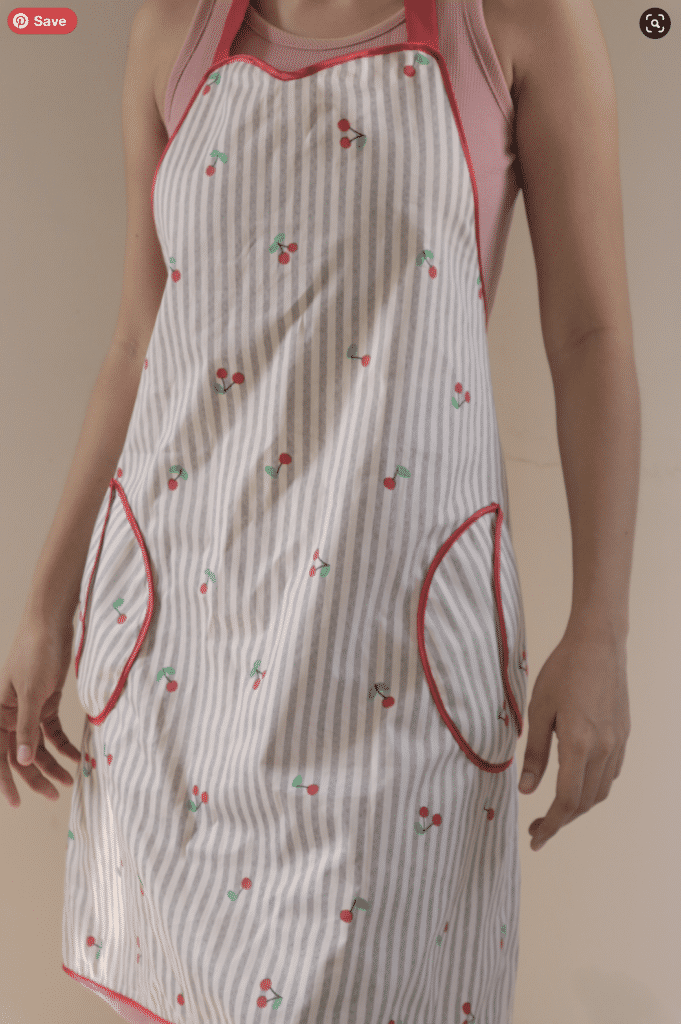- The Sewing Brew
- Posts
- 💥 “Shape Me—The Sexy Secrets of Sewing in Boning!” 💃
💥 “Shape Me—The Sexy Secrets of Sewing in Boning!” 💃
Save Money and Master Your Sewing Skills with These Expert Tips!

Ever drooled over a designer dress and thought, “How does it hold that perfect shape?”
Here’s a little secret: It’s not magic, it’s BONING. And guess what? You can do it too—no couture training required.
If you’re tired of your handmade garments looking “homemade” and want to upgrade to jaw-dropping, custom-fitted, struttin’-like-you-own-the-runway creations, boning is the game-changer you need in your sewing toolbox.
Now, I’ll be honest. The first time I tried adding boning, I had that moment of doubt—Am I about to ruin this? Will it be too stiff? But after a little trial and error (and some solid techniques), I was hooked. The difference was night and day—suddenly, my garments held their shape like they belonged on a magazine cover.
And now, I’m sharing the exact steps so you can get that couture-level structure in your sewing.
Mastering Boning: The Secret to a Professional Finish
Boning isn’t just for corsets (though if you’re making one, it’s non-negotiable). It’s for anyone who wants to add structure and support to a bodice, wedding dress, or evening gown.
Historically made from whalebone (yikes!), modern boning is now available in steel, plastic, and synthetic materials—each offering different levels of flexibility and support.
If you’ve ever wondered how to make a garment hug the body perfectly without sagging, wrinkling, or collapsing—boning is the answer.
3 Key Steps to Sewing Boning Like a Pro
🔹 Preparation: Measure your boning correctly—always cut it slightly shorter than the seam allowance so it doesn’t poke out and cause discomfort.
🔹 Installation: You can insert boning into sewn casings or directly into the seam allowance (more on that below).
🔹 Finishing: Shape the boning to follow the body's natural curves, and secure it so it stays put and doesn’t twist.
📌 See the Corset Boning Recommendations
How to Create Perfect Boning Channels
Boning needs a home. That’s where boning channels (casings) come in. They keep the boning secure, prevent shifting, and ensure comfort so it doesn’t dig into the wearer.
Here’s how to do it step-by-step:
✅ Cut the Boning: Trim your boning to size. If using plastic boning, round off the edges with scissors or cover them with fabric tape to prevent poking through your fabric.
✅ Make the Casing: Use bias tape or cut a strip of fabric to create a casing. Fold it lengthwise, press, and stitch it closed into a tube.
✅ Position the Casing: Pin or baste the casing along the bodice seams, corset lines, or bustier panels. Keep it straight and aligned.
✅ Sew the Casing to the Garment: Stitch along both edges of the casing, leaving one end open for boning insertion.
✅ Insert the Boning: Slide the boning into place—make sure it’s snug but not stretching the fabric.
✅ Secure the Boning: Close the casing with a final stitch at the open end so the boning stays put.
Reinforce the Boning: Reinforcing the stitching on the boning casing is crucial to ensure durability and maintain the structure of your garment. Here are some special instructions for reinforcing boning casings:
1. Choose the Right Stitch Length and Type
Use a shorter stitch length (2.0–2.5mm) for extra strength, especially at stress points.
Consider using a triple stitch (if your machine has one) for added reinforcement.
Backstitch or lockstitch at the beginning and end of the casing to prevent unraveling.
2. Secure the Ends of the Casing
Sew an additional row of stitching ⅛ inch (3mm) inside the first row to strengthen the casing.
You can also use a bar tack (a short, dense zigzag stitch) at the openings to keep the boning from poking through.
3. Double Stitch Along the Casing
Stitch along both edges of the casing to evenly distribute tension.
If using a fabric casing, stitch two parallel lines for extra security.
4. Use a Strong Thread
Polyester or heavy-duty thread is best to handle the stress of the boning.
If working with corsetry, consider topstitching thread for added durability.
5. Reinforce High-Stress Areas
Where the boning meets a seam, sew across the casing with a few stitches to anchor it in place.
If sewing a corset, reinforce waist tape areas with extra rows of stitching.
6. Consider Using Bias Tape or Twill Tape
If your fabric is delicate, sew the boning inside bias tape or twill tape before attaching it to prevent tearing.
✅ Final Check: Ensure the boning lies flat without distorting the fabric. Press the garment carefully (avoid direct heat on plastic boning).
📌 See the Recommended Products
FAQs About Boning (Because I Know You’re Wondering…)
🔥 Can You Hand Sew Boning?
Yes! If you don’t have access to a sewing machine or need more control, you can sew boning by hand. Just be patient and use tight, even stitches for security.
🔥 Can You Sew Through Plastic Boning?
Yes, but you need a heavy-duty needle. A universal needle will not survive the battle. Use a denim or leather needle, and adjust your stitch settings so you don’t weaken the boning.
MEMBER ACCESS
Pattern Reviews
More from Sewing Pattern Secrets
See our Sales Page Offer: We offer a database of over 150 sewing patterns, instructions, 46 supporting sewing tutorials, and 5 ebooks. Learn more.
Existing Members: Access your Paid Library Here
Five Free Sampler Site Members: Sign into your Five Free Pattern Access
Sign up for Access to the Five Free Pattern Mini Sampler Site Here
How to Print Our Patterns Blog Article
Want to see more about what is INSIDE the database? Peek INSIDE NOW
Affiliate Disclosure
Some of the links in this email and in The Sewing Brew newsletter contain affiliate links, which means if you click on them and make a purchase, we authors may receive a small commission, at not extra cost to you. This helps support our work and allows us to to continue to provide valuable free content. I only recommend products that I use and love. Thank you for your support.









Reply